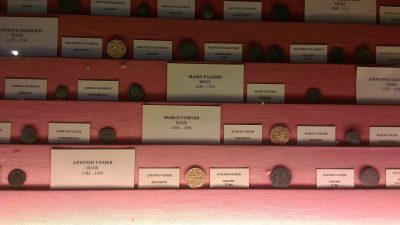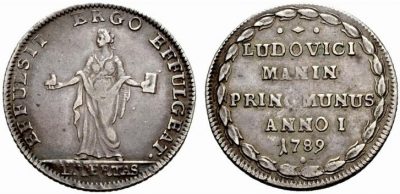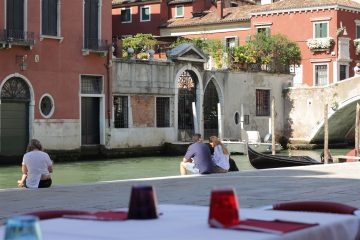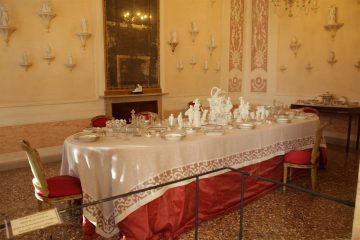Laatste update op 8 May 2020
Oselle are tokens that were made for the doge to give away to nobility. They were coined for the first time by doge Antonio Grimani (1521-1523). Actually these oselle do not concern coins, but ducks! An interesting piece of the Venetian history.
Buying off hunting privileges
This story begins with the privilege of the doges to hunt in a certain area around Venice/Veneto. As the power of the doge was decreased more and more in the 13th and 14th century, his privileges were targeted as well. As from 1361 the doge was obligated to buy off this favour. This could be done by giving away five wild ducks (with red feet) to the head of every noble family in the city as stated in the golden book of aristocracy being a member of the Maggior Consiglio. Especially the female ducks, in Venetian slang “Mazzorini” or “Oselle” (Italian: uccello), were tasty. The phrase “oselle” is best to be explained as: female ducks.
Too much nobility, too many ducks
With the increase of the number of nobility it got increasingly difficult to catch a sufficient amount of ducks. In 1521 there were over 9,000 ducks required to provide for the necessary amount. So, the senate approved of the doge´s idea to hand out tokens (ducats) to represent the value of the ducks: the oselle. On the one side of the coin the name of the doge, the year and the text ‘munus’ which means something similar as ‘gift were stated’. Op the other an recent event was depicted (usually a political, religious or festive). The value of the silver coint had to represent the value of a quarter of a golden ducate.
The end of the Oselle; a new start
 De latest official osella dates back to 1797, coined for the last doge of Venice, Ludovica Manin. The tradition rounded up with the raid of Napoleon after which the Treaty of Campo Formio followed and the last doge was discharged. To the joy of collectors, the ducat is recoined since 1993 thanks to the efforts of the comite of the Festa della Sensa.
De latest official osella dates back to 1797, coined for the last doge of Venice, Ludovica Manin. The tradition rounded up with the raid of Napoleon after which the Treaty of Campo Formio followed and the last doge was discharged. To the joy of collectors, the ducat is recoined since 1993 thanks to the efforts of the comite of the Festa della Sensa.
Tokens/ducats
The value of the tokens represented a quarter of the Venetian ducat. This value was recorded in the official exchange courses. Now, what exactly was the value of a quarter of the ducat at that time? A ducat of 3,5 gram was worth at least a wage of two weeks in the Middle Ages. An average person would hardly get his hands on something else than silver or copper coins. Golden coins were the means of payment of the rich, noble and dealers. 50 Venetian golden ducats (zecchini) were similar to around 1,500 to 2,000 nickel, which is over the annual salary of a bricklayer.
Go see the coins for yourself
If you like, you can view the (zecchini) in Museo del Risorgimento (Biblioteca Nazionale Marciana) in the 2nd floor of Museo Correr. Rhinocoins.com » gives you an impression of the coins.
Nice to know (source Wikipedia): “In 1284 the Republik of Venice coined their first firm golden coin, the ducat; the standard for Europe coins for the following 600 years. Although other coins were introduced as florin, zloty and guinea the ducat would hold its position as standard to weigh other coins. “
For more, read the Wikipedia-article ‘Dukaat’
Sources
Oselle, roth37.it (It) »
Oselle della Sensa (It) »
stedentips, Venetië Marciana »
Palazzo Thiene (It) »
Oselle Veneziane »
Wikipedia.org, Osella (German) »







0 Comments